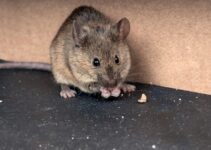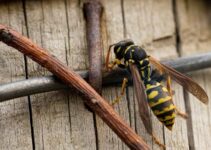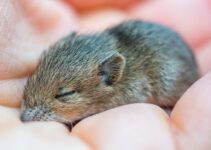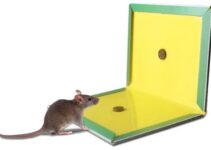Wasps tend to find their way into our homes seeking shelter and warmth. Food is another factor that attracts wasps. With a wasp infestation, you would be dealing with an unpleasant experience and there are chances of you getting stung.
Being able to identify signs of a wasp infestation could help you handle the situation early and ensure that it doesn’t require a professional solution. In this article, we will go into the 5 signs that you have wasps in your walls.
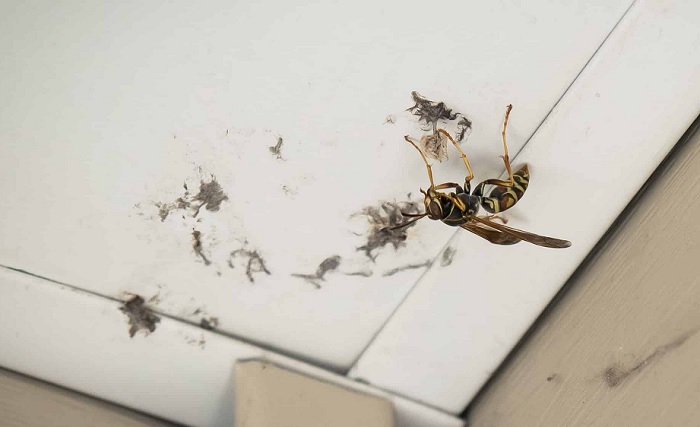
5 Signs You Have Wasps in Your Walls
-
Increased Wasp Activity Around Your Home
One of the first indicators of a potential wasp infestation is a sudden surge in wasp activity near your home. If you notice an unusually high number of wasps flying around your windows, doors, or outdoor structures, it’s possible that a nest is nearby.
Wasps are attracted to food sources and nesting sites, so if you notice there are more wasps in your home, then it could be that they have made a nest within your walls.
-
Audible Buzzing Sounds
While wasps are generally known for their buzzing sounds, and this can be disturbing when they are nesting in your walls. If you hear a consistent buzzing or humming sound coming from within your walls, particularly during the daytime, it could be a sign of an active wasp nest.
The vibrations generated by the wasps’ movements can be transmitted through the walls, making the sound more audible.
-
Visible Entry and Exit Points
Wasps are one of nature’s skilled architects, creating intricate nests from chewed wood fibers and saliva. They often build their nests in sheltered locations, including within wall voids.
If you notice small holes or openings in your walls, especially around eaves, rooflines, or vents, it’s possible that wasps have established an entry and exit point for their nest. Keep a close eye on these openings for signs of wasp activity.
-
Presence of Wasp Nesting Material
Inspecting your home’s exterior and interior can reveal clues about a wasp infestation. Check out for discarded wood fibers, mud, and other materials that wasps use to construct their nests.
You may find these materials near entry points, on window sills, or even within your living spaces. Identifying these nest-building materials early can help you determine the extent of the infestation.
-
Observing Wasps Indoors
If you begin to notice wasps inside your home, particularly in higher numbers, it could indicate that a nest is located nearby, potentially within your walls. Wasps that have established a nest outside your home may accidentally find their way indoors, and their presence should not be taken lightly.
How to Get Rid of Wasps in Your Home
Dealing with a wasp infestation in your home requires extra care. Follow this simple guide to safely and effectively remove wasps from your living space.
1. Identify the Nest Location
Start by locating the wasp nest. Follow the visible signs such as increased wasp activity, and buzzing sounds, or check for cracks in the walls around your home. Common nesting sites include eaves, rooflines, vents, and wall voids. Identifying the nest’s location is the first thing to do.
2. Assess the Situation
Before taking action, confirm the size of the nest and the level of infestation. Small nests can often be dealt with using DIY methods, while larger nests or extensive infestations may require professional help.
3. Choose the Right Time
Plan your intervention during the evening or early morning when wasps are less active and likely to be inside the nest. Cooler temperatures during these times make wasps less aggressive and more likely to be in the nest.
4. Wear Protective Clothing
Safety is important. Wear protective clothing such as long sleeves, pants, gloves, and a hat. Wrap a scarf around your face to shield it from potential stings.
5. Use DIY Methods (for Small Nests)
Dust Insecticides: If the nest is reachable, use insecticidal dust designed for wasps. Apply the dust into the nest entrance during the evening or early morning. Seal the entrance after treatment. Commercial wasp sprays can also be effective (this could be tetramethrin or prallethrin-based insecticide spray). Spray the entrance and soak the nest thoroughly, then quickly get to a safe distance. If the nest is large, hard to access, or you’re allergic to stings, it’s best to seek professional pest control services.
Get Rid of the Nest: After an hour of applying the insecticide, you would need to get rid of the nest. You need to use a plastic bag to cover and move the nest. Ensure that the nest stays in the plastic bag and dispose of it.
Preventing Future Infestations
After successfully removing the nest, take preventive measures to avoid future infestations:
- Seal potential entry points around your home.
- Keep outdoor food sources covered and properly dispose of trash.
- Trim shrubs and trees away from your home to eliminate potential nesting sites.
- Use wasp-repellent plants such as mint, eucalyptus, and citronella around your home.
Related Q&As
Are there specific types of wasps that are more likely to nest in walls?
Paper wasps and yellowjackets are common wasp species that may choose to build nests in wall voids.
Can wasps cause structural damage to my walls?
While wasps themselves may not cause significant structural damage, their nesting activities could potentially weaken wall materials over time.
How can I safely remove wasps from my walls?
It is recommended to hire a professional pest control service to safely remove the wasp nest and address the infestation. Attempting to remove it yourself can be risky.
Why would wasps choose to build their nest inside my walls?
Wasps may be attracted to your home due to the warmth, shelter, and protection that wall voids provide for their nests.
Are wasps in the walls dangerous?
Yes, having wasps in your walls can be dangerous as they may feel threatened if disturbed, leading to stings. Some people are allergic to wasp stings, which can result in severe reactions.
